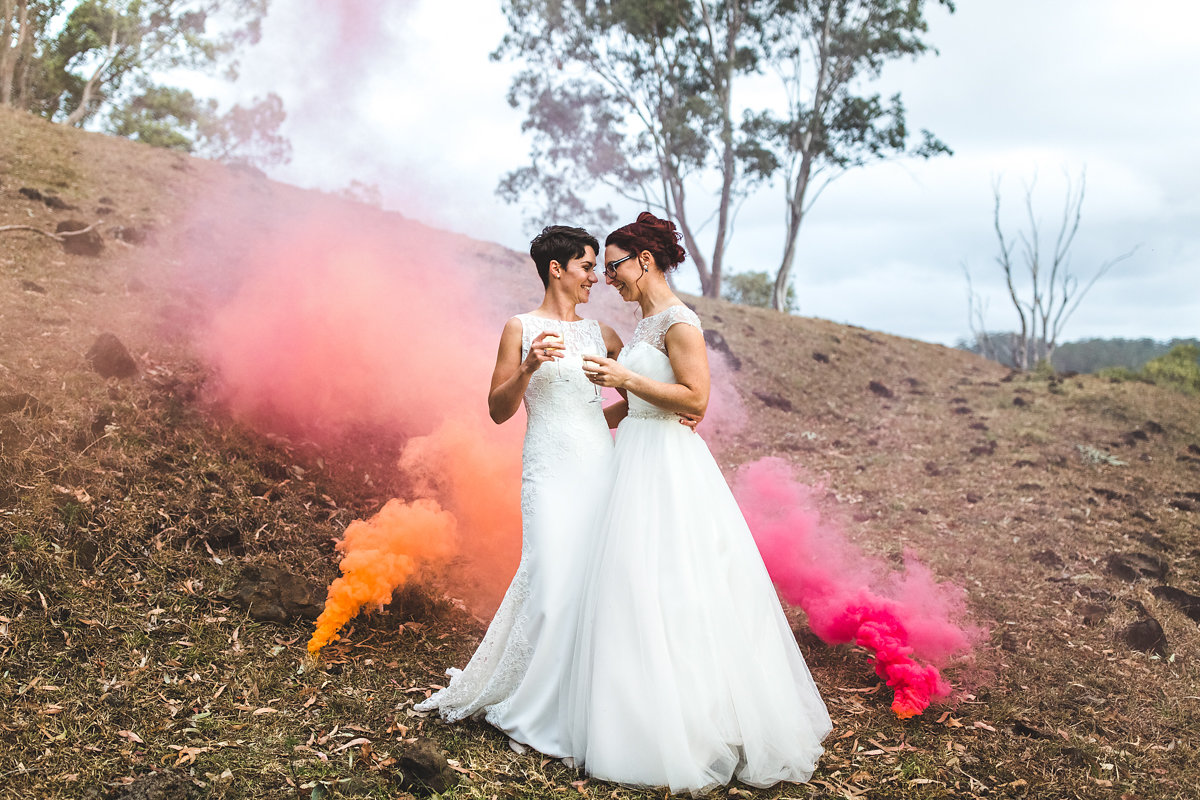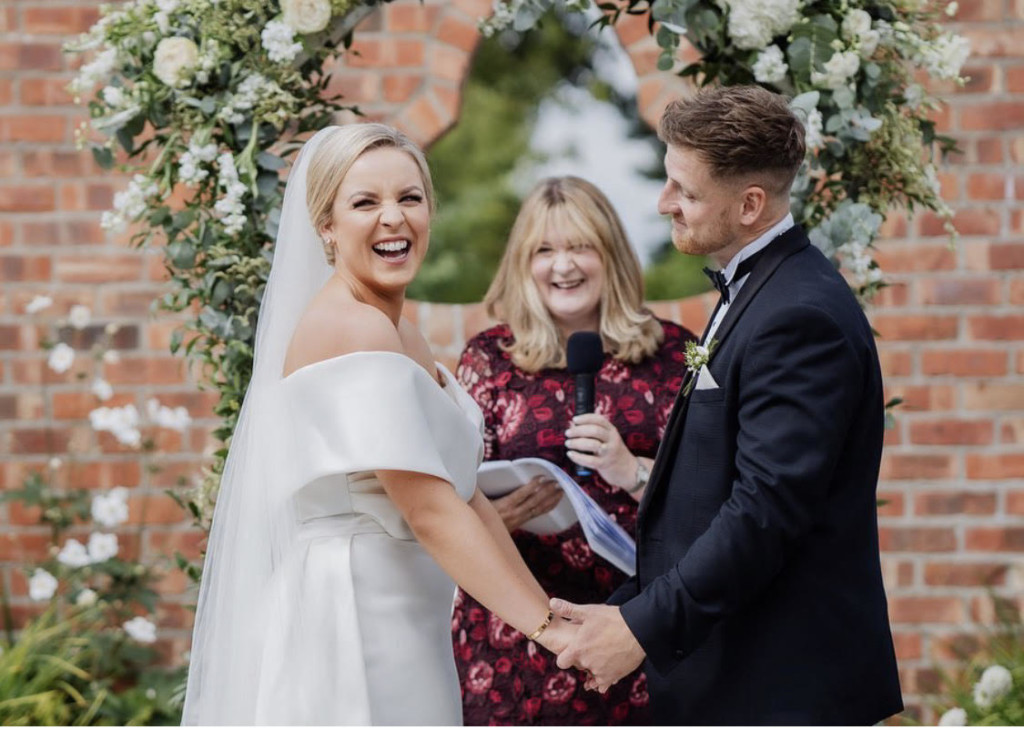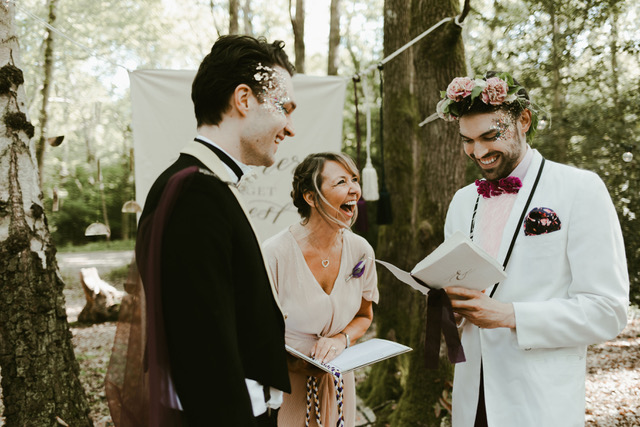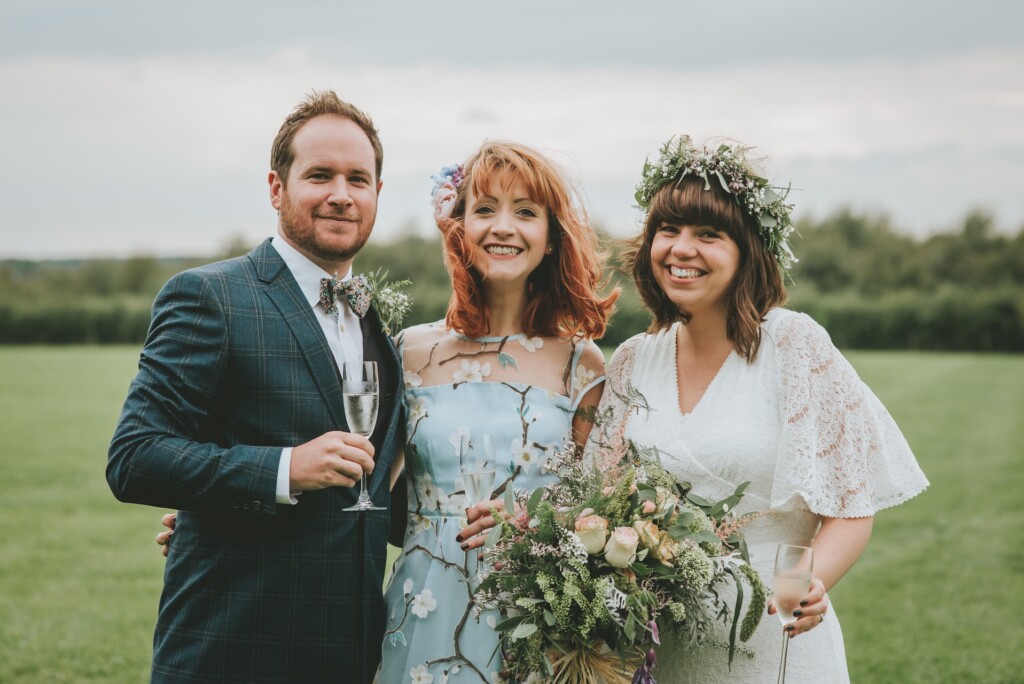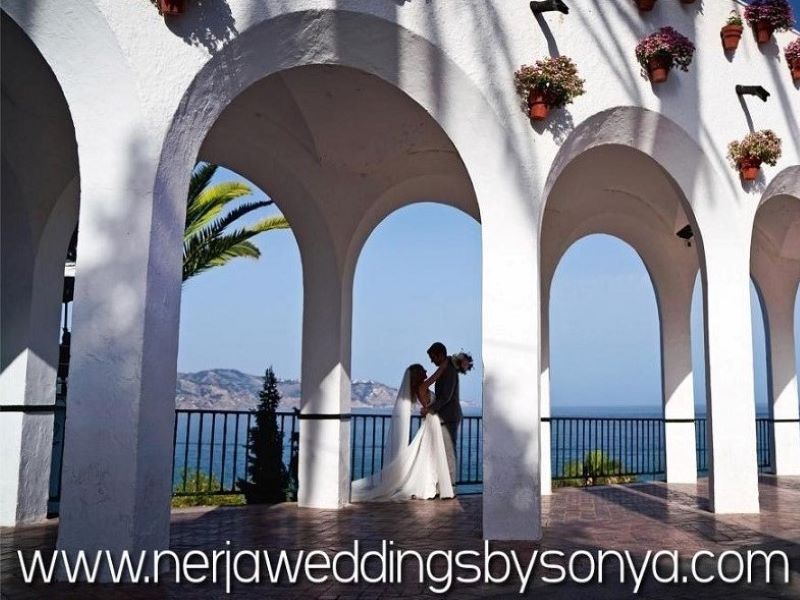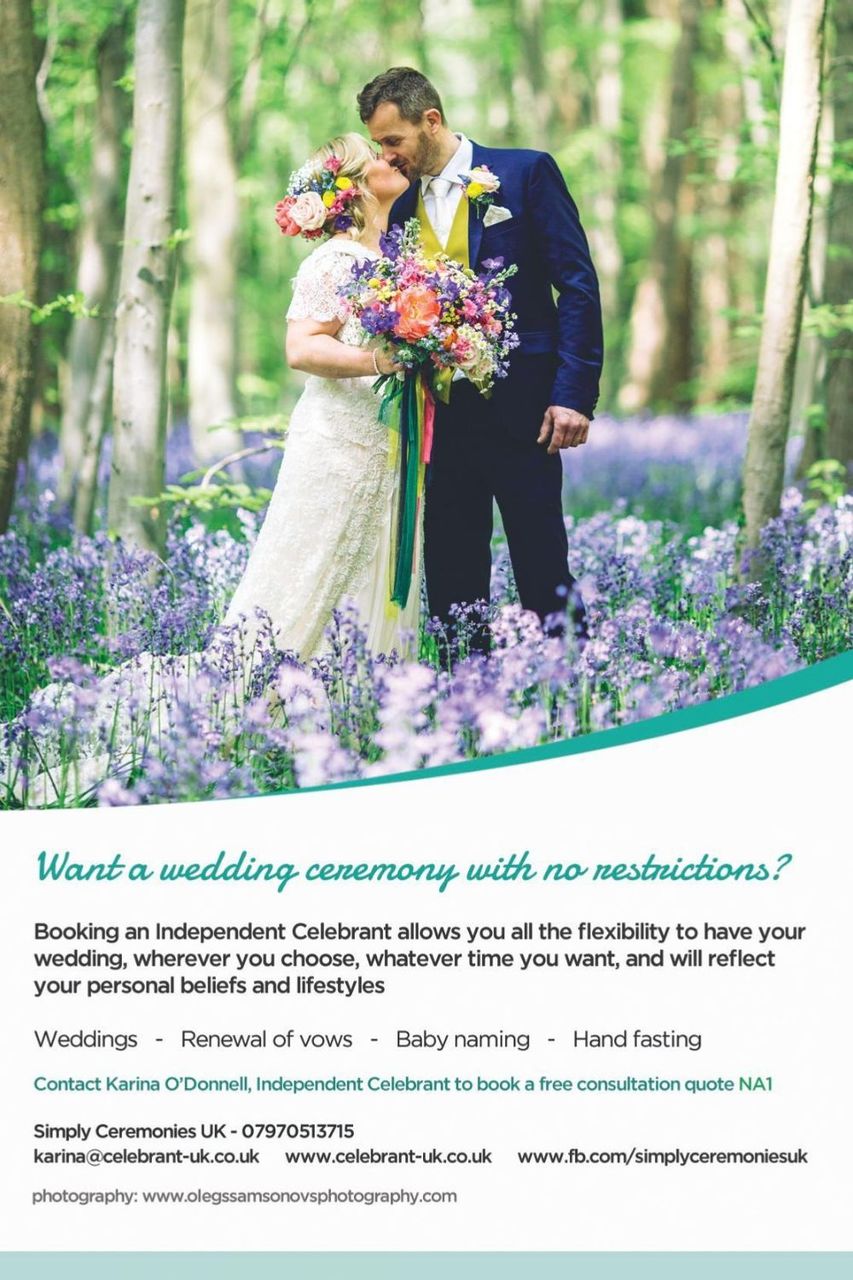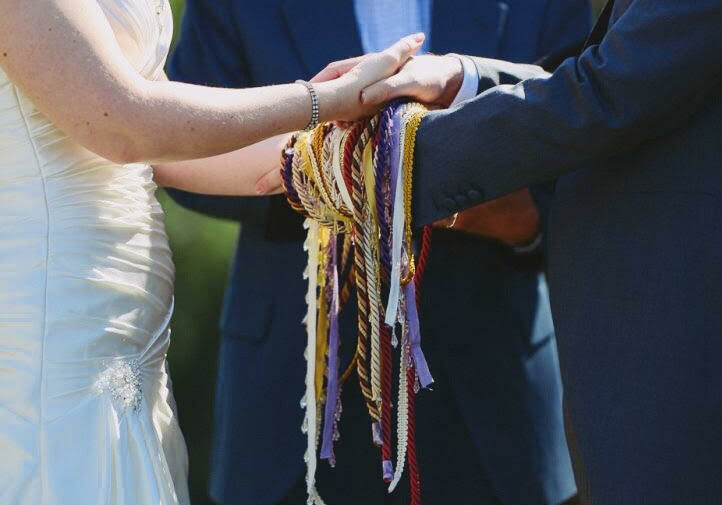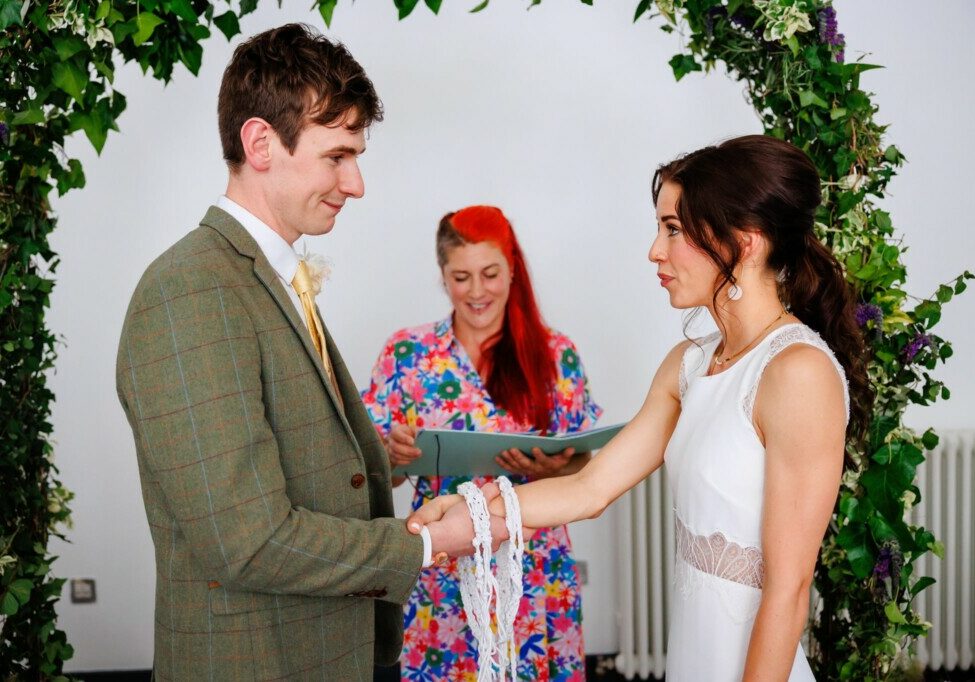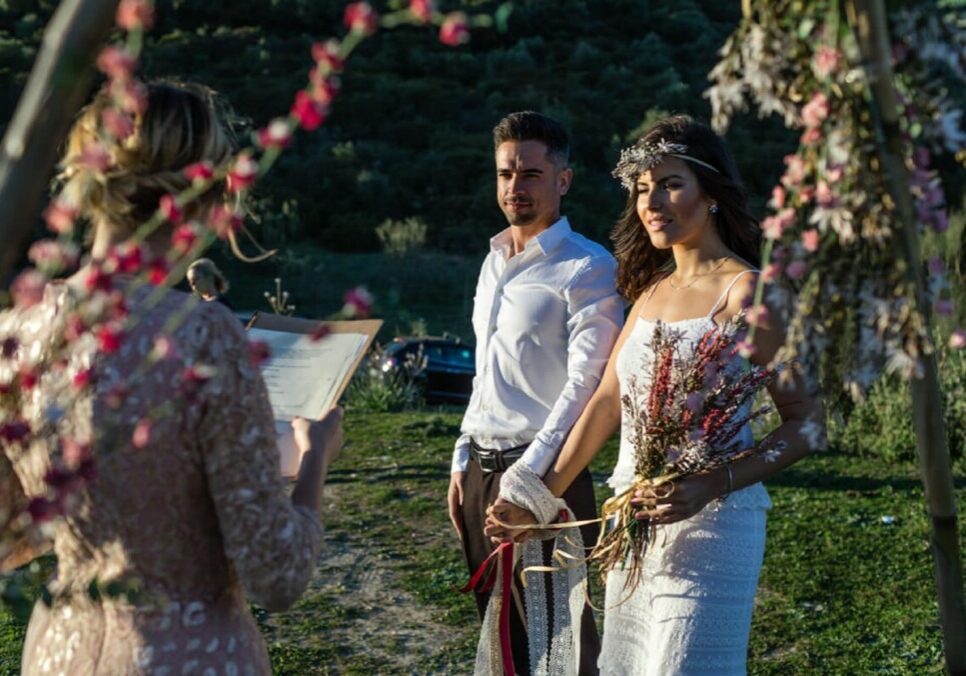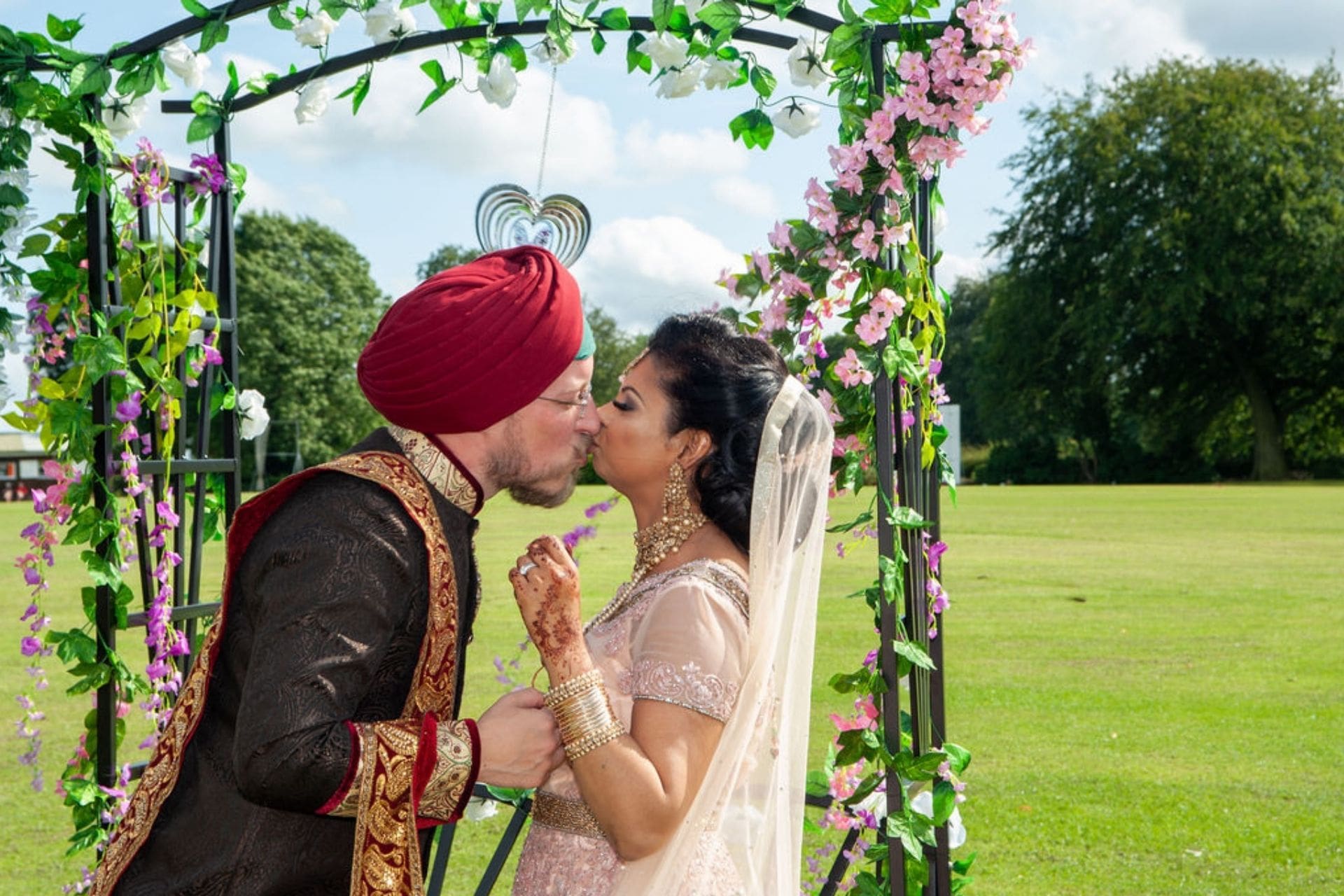
Couple: Raj & Joe
Venue: Ashover Parish Hall in Derbyshire
Celebrant: Helen Jubb
The couple
What struck me about Raj and Joe after chatting with them was the journey of discovery they had been on. This is a couple who had to find their own path, balance their differing cultures and religious beliefs whilst navigating the untrod path of love and sharing a home.
On the day
Raj and Joe did their legal paperwork earlier the same day with family members so when they arrived at Ashover Parish Hall in Derbyshire there was a relaxed and fun atmosphere. Joe had been wearing a traditional Western suit for the registry office but before the celebrant led ceremony began he changed into a churidar with kameez plus a turban. Raj’s male relatives helped dress him as part of the lead up to the main event. Both Raj and Joe looked absolutely amazing. The ceremony took place on the stage in the hall, which had been lavishly and colourfully decorated with an arch and seat covered with flowers and cushions.
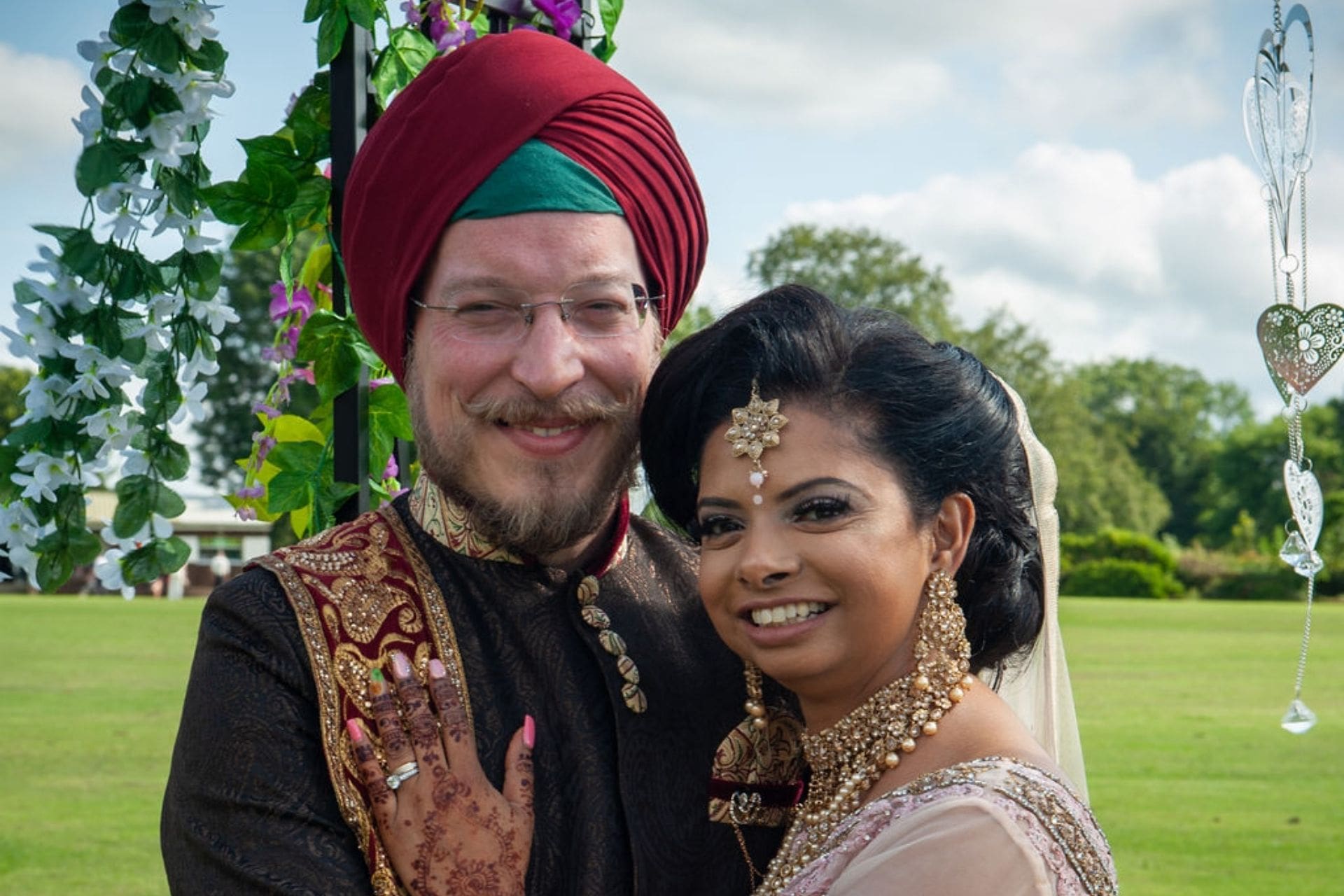
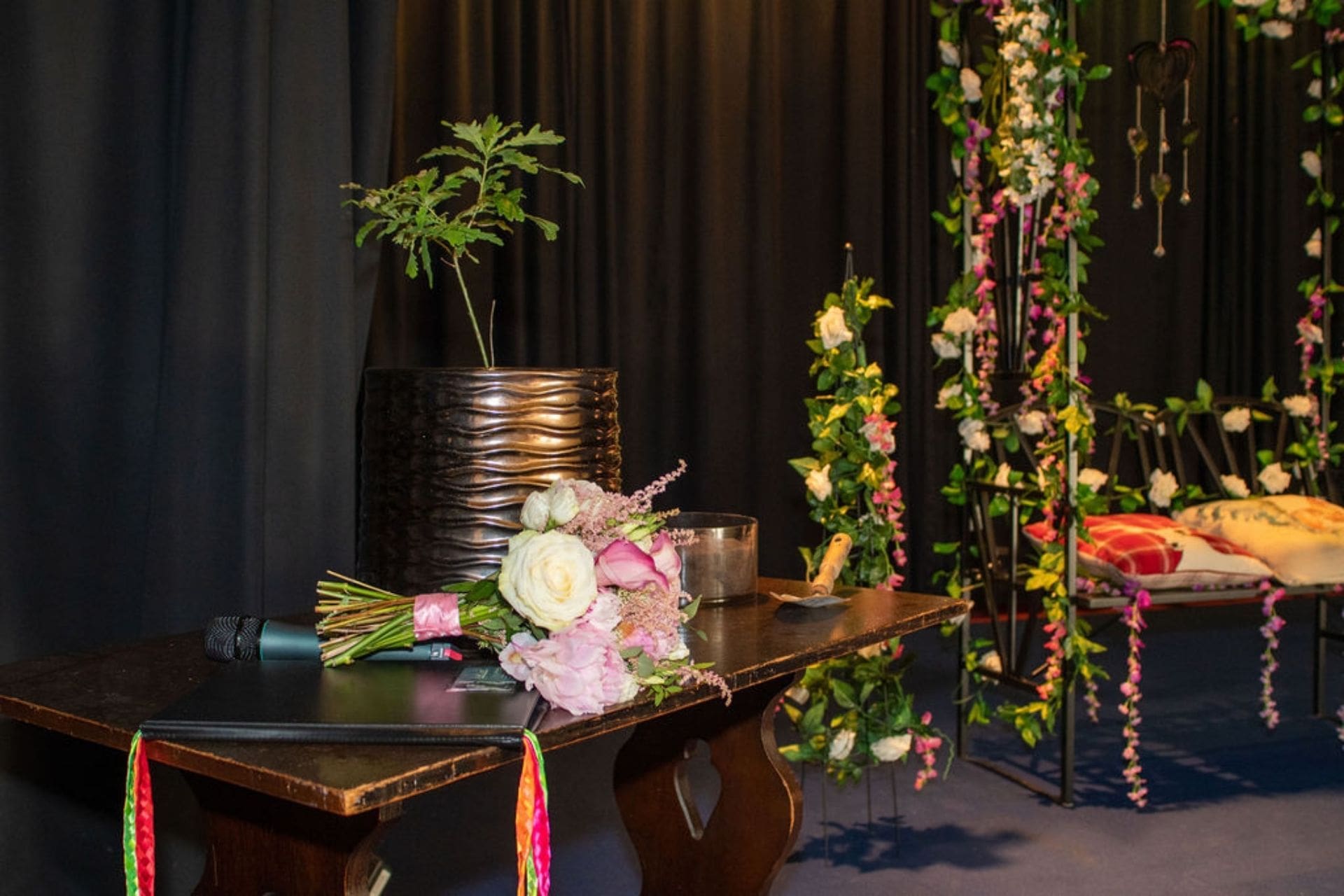
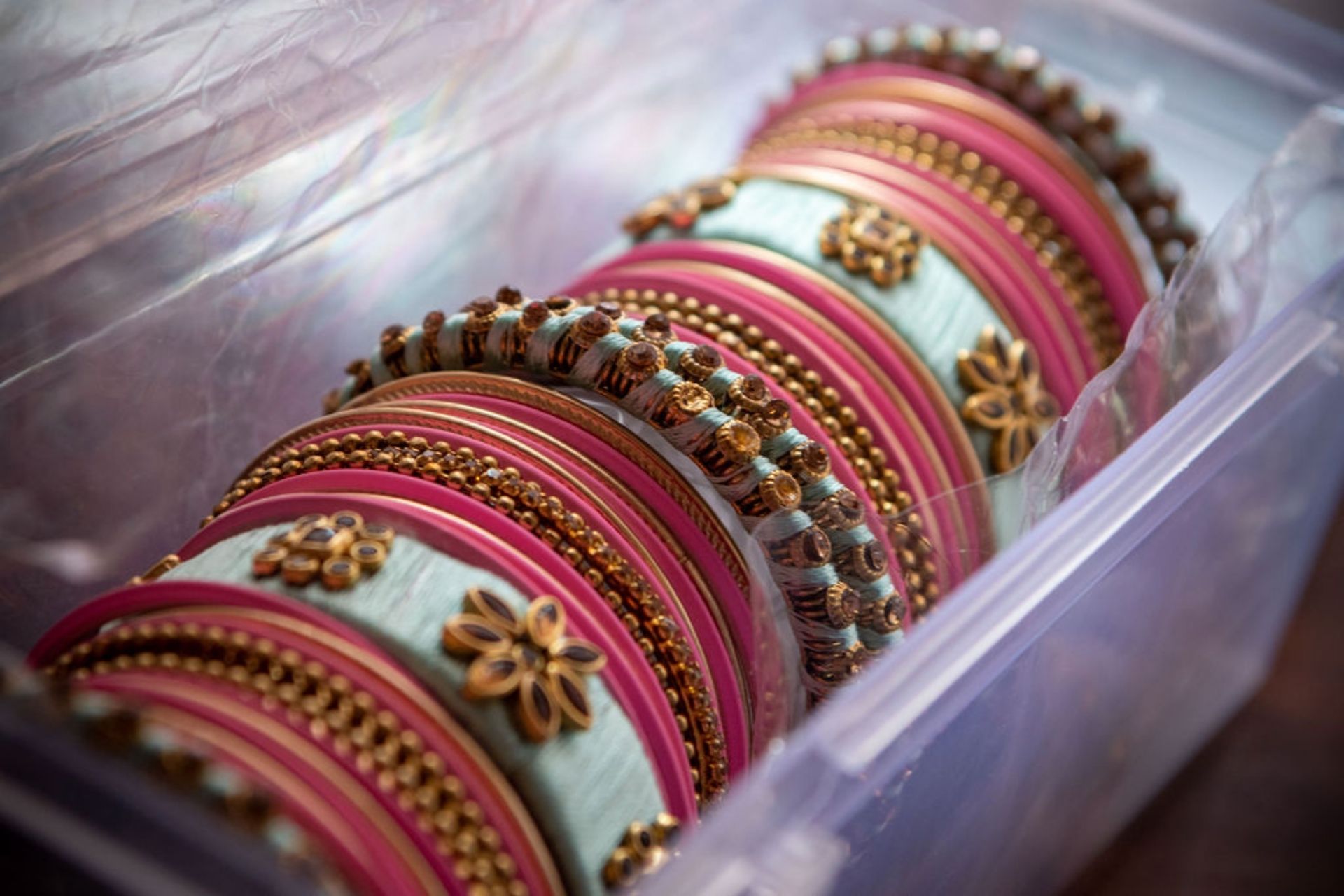
The ceremony
From the beginning, Raj and Joe knew they wanted there to be elements of Raj’s Sikh beliefs in there. The traditional Sikh wedding ceremony has a hymn section with four distinct parts with different themes. From this we created four general themes that corresponded to the original ones. They were: Marriage is the best state of life; Starting a new life together; Devotion; Spiritual Union. These themes blended perfectly into the ceremony, with their relationship story woven in along the way.
Symbolic Rituals
Raj and Joe decided to include two additional elements to their ceremony, a tree planting (which linked with the theme of starting a new life together) and a hand tying (which was in the section of spiritual union). The Tree Planting symbolised the roots of their relationship, and the continued growth of their love, as they became each other’s family. They chose an oak tree, the King of Trees. England is one of many nations to choose the mighty oak as its national tree as it has an enduring emblem of strength and survival.
The hand tying involved both sets of parents laying ribbons across the couple’s hands. The first binding was green to represent luck, prosperity and nurturing; the second binding was pink to represent unity, honour and happiness; the third was orange to represent kindness, adaptability and encouragement and the fourth and final binding was red to represent love, strength and health.
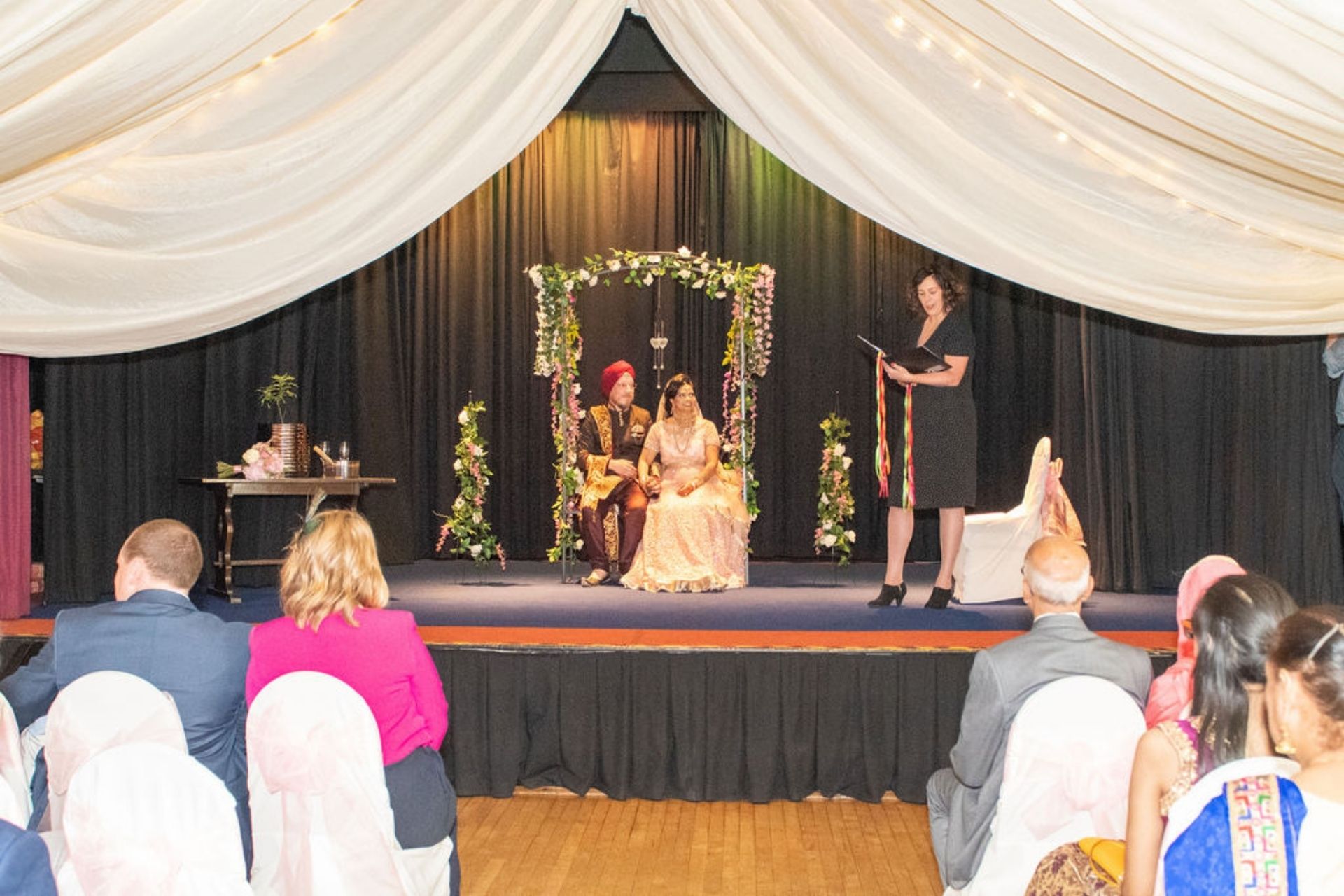
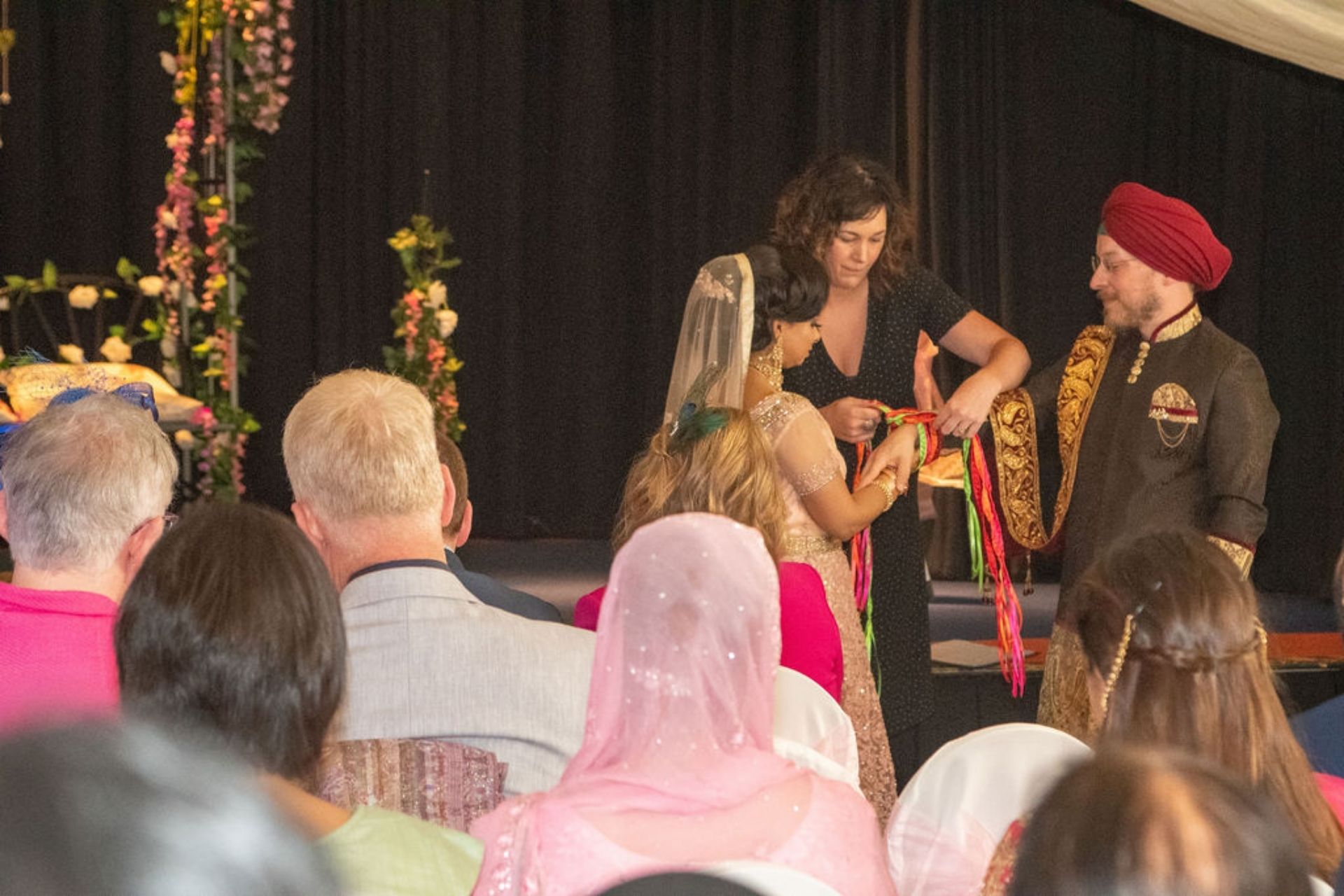
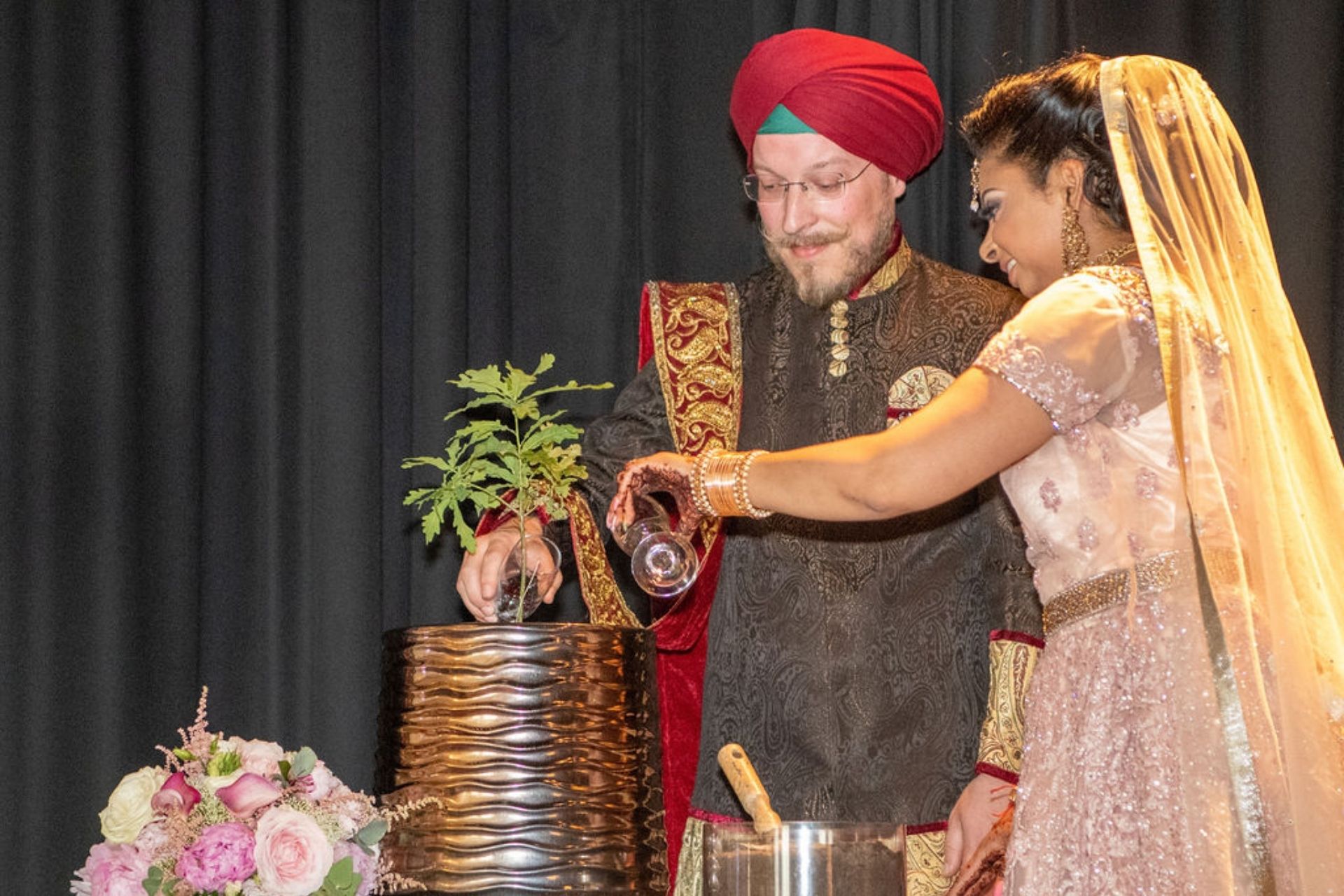
Photographer Credit: Better Together Photography
subscribe
drop us your email and we'll send you beautiful ideas to inspire your perfect celebration
